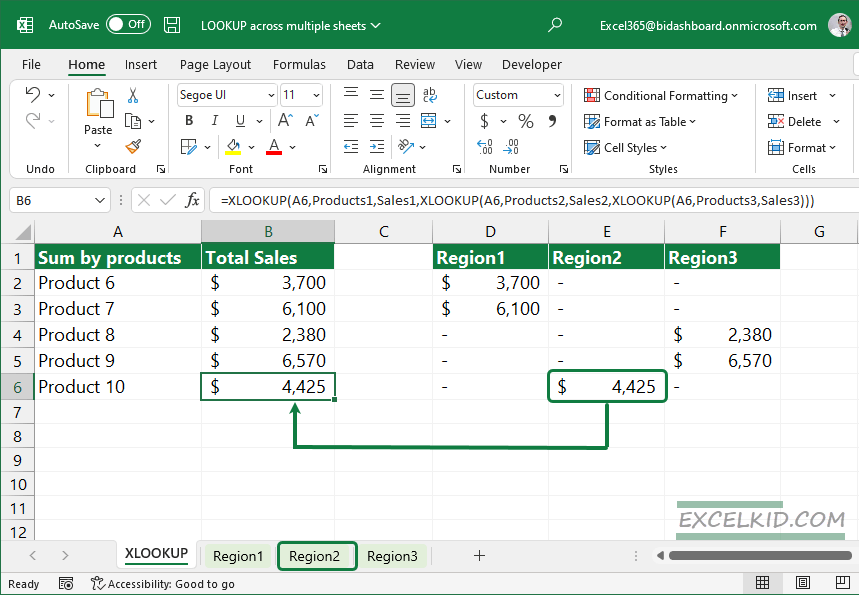5 Ways to Locate Sheets in Excel VBA Fast

Excel, a staple tool in the world of data analysis and office productivity, can become quite unwieldy when dealing with workbooks containing numerous sheets. VBA (Visual Basic for Applications) offers powerful solutions to manage these sheets efficiently. Here are five effective methods to locate sheets in Excel VBA, helping you to streamline your workflow:
1. Using Sheet Name

The simplest way to locate a sheet is by its name. This method is direct but requires exact knowledge of the sheet name, including its case sensitivity:
Dim ws As Worksheet
Set ws = ThisWorkbook.Sheets(“Sheet1”)
🔍 Note: If the sheet name contains spaces or special characters, ensure to use single quotes within the double quotes like Worksheets("'Sheet Name'").
2. Looping Through All Sheets

When the sheet’s name is unknown or dynamically generated, looping through all sheets is often the go-to method:
Dim ws As Worksheet
For Each ws In ThisWorkbook.Sheets
If ws.Name = “SheetName” Then
‘ Your code here
End If
Next ws
- Use `ws.Index` to get the position of the sheet.
- This method can be slow for workbooks with many sheets, so use it judiciously.
🔍 Note: Remember to exit the loop when the desired sheet is found to save on processing time.
3. Using CodeName Property

The CodeName property allows you to refer to a sheet regardless of its actual name, which can change:
Sheet1.Activate
Here, `Sheet1` refers to the code name, which you can find and modify in the VBA project window.
🔍 Note: The `CodeName` does not change with renaming the sheet in the Excel UI, making it an excellent reference point for VBA scripts.
4. Searching by Sheet Content

Sometimes, locating a sheet by its content can be practical, especially if you are looking for a specific piece of data:
Dim ws As Worksheet
For Each ws In ThisWorkbook.Sheets
If Not IsError(Application.Match(“SearchTerm”, ws.UsedRange, 0)) Then
’ This sheet contains the search term
End If
Next ws
- Here, `Application.Match` is used to find the search term within the used range of cells.
🔍 Note: This method can be CPU intensive, so limit its use for essential searches.
5. Using Array Method for Multiple Sheets

For scenarios where you need to locate or handle multiple sheets at once, an array can be efficient:
Dim sheetNames() As Variant sheetNames = Array(“Sheet1”, “Sheet2”, “Sheet3”) Dim i As Integer
For i = LBound(sheetNames) To UBound(sheetNames) Set ws = ThisWorkbook.Sheets(sheetNames(i)) ‘ Operations on the sheets go here Next i
- Arrays are useful for predefined, static lists of sheet names.
- This method is fast when the number of sheets is known and does not change frequently.
🔍 Note: Make sure the sheets named in the array exist in the workbook to avoid runtime errors.
Mastering these methods to locate sheets in Excel VBA can significantly enhance your productivity, especially when dealing with large workbooks. Whether you're automating a report generation, data analysis, or simply organizing your workbook, these techniques provide the flexibility and speed needed to manage Excel sheets effectively.
How can I speed up VBA code when searching for sheets?

+
Turn off screen updating with Application.ScreenUpdating = False before running loops, and set it back to True after your operations are complete. Also, consider exiting loops as soon as you find what you’re looking for.
Can I rename sheets dynamically?

+
Yes, you can rename sheets in VBA with Sheet1.Name = “NewName”, where Sheet1 is either the sheet name or code name.
What if the sheet I’m looking for does not exist?

+
Use error handling to avoid runtime errors. You can use On Error Resume Next before accessing the sheet, and then check If Err.Number <> 0 to handle the case where the sheet is not found.
Is there a way to sort or organize sheets?

+
Yes, you can sort sheets alphabetically or by other criteria using VBA, but it’s not a built-in feature of Excel. You would need to write a custom VBA function to perform this task.



